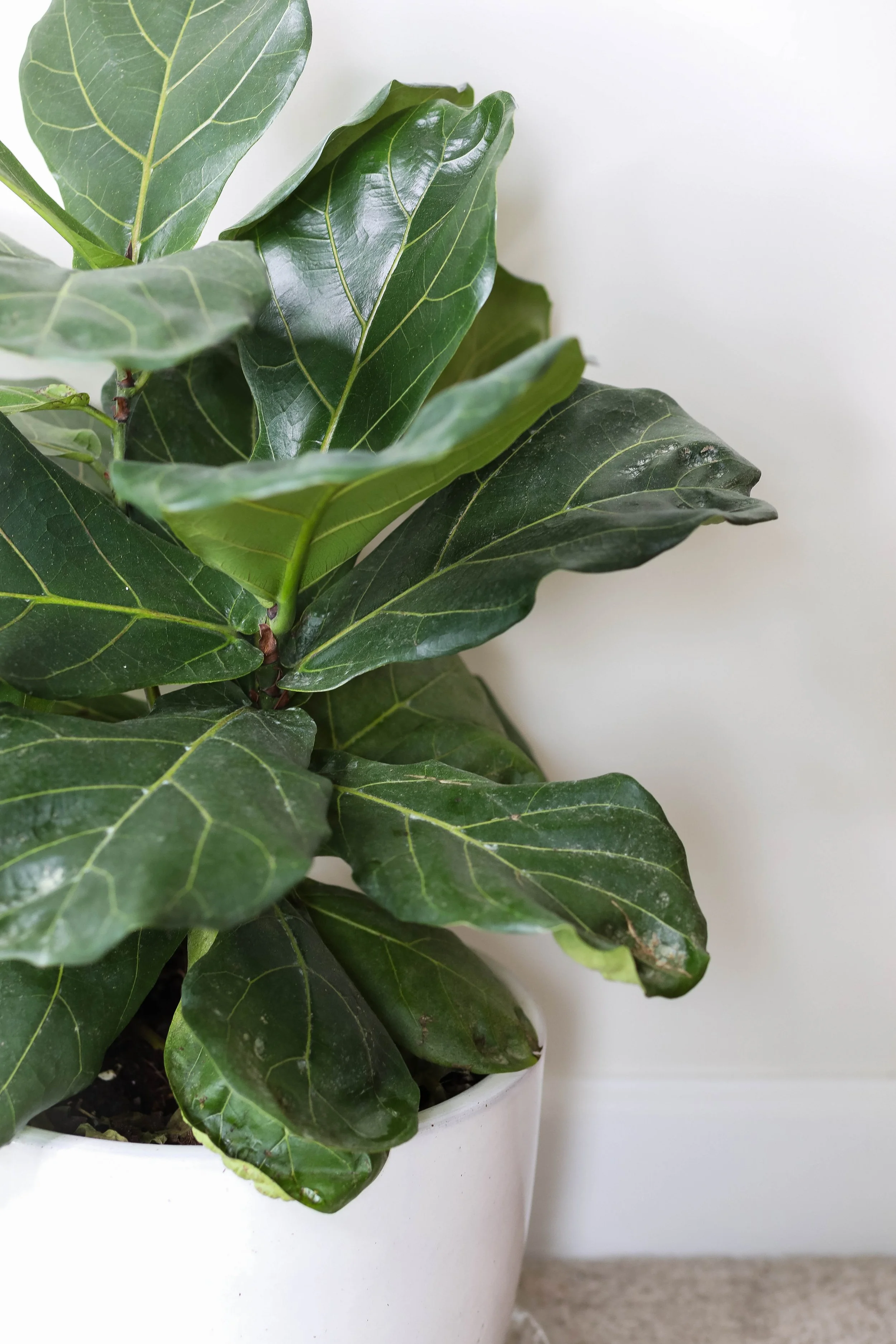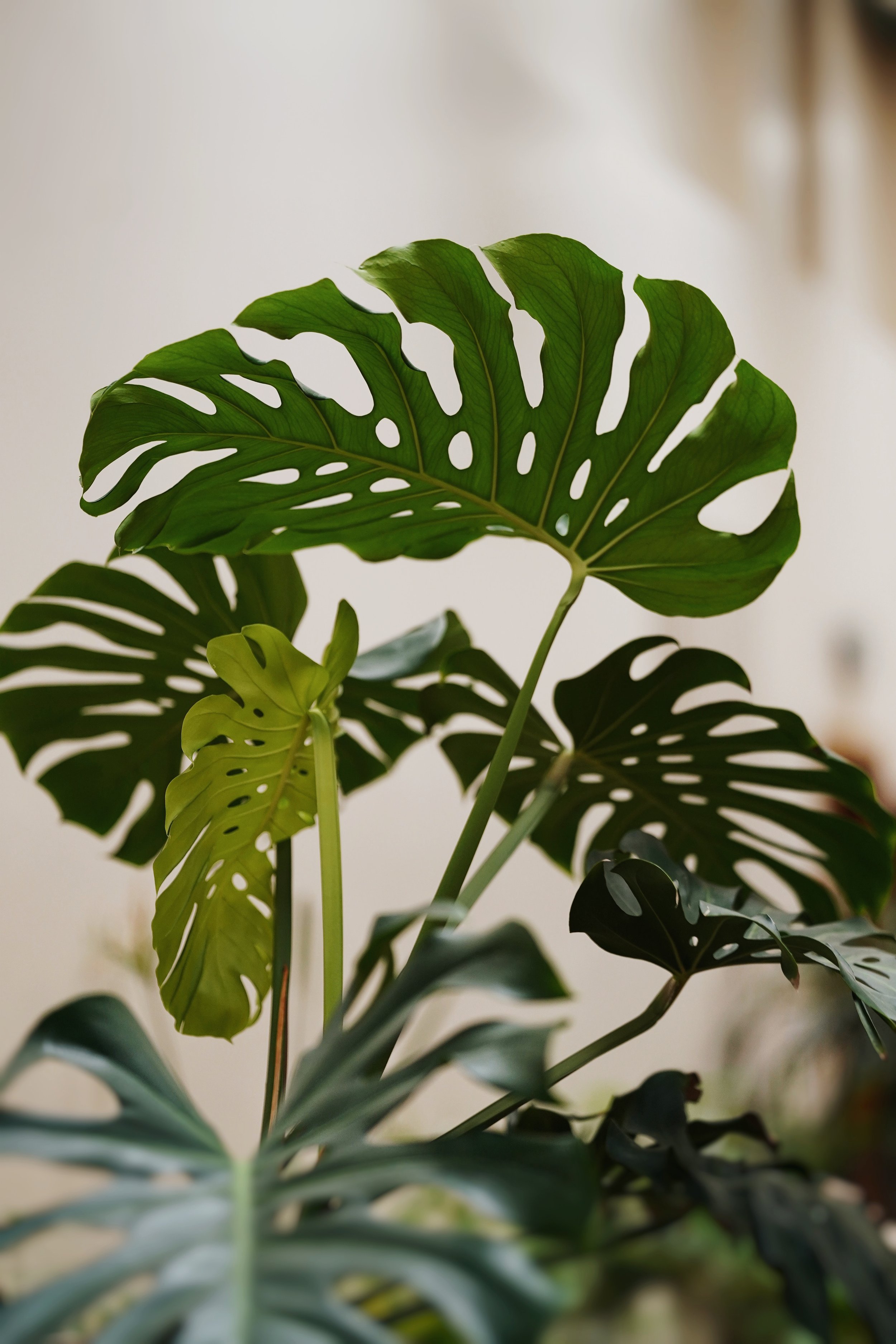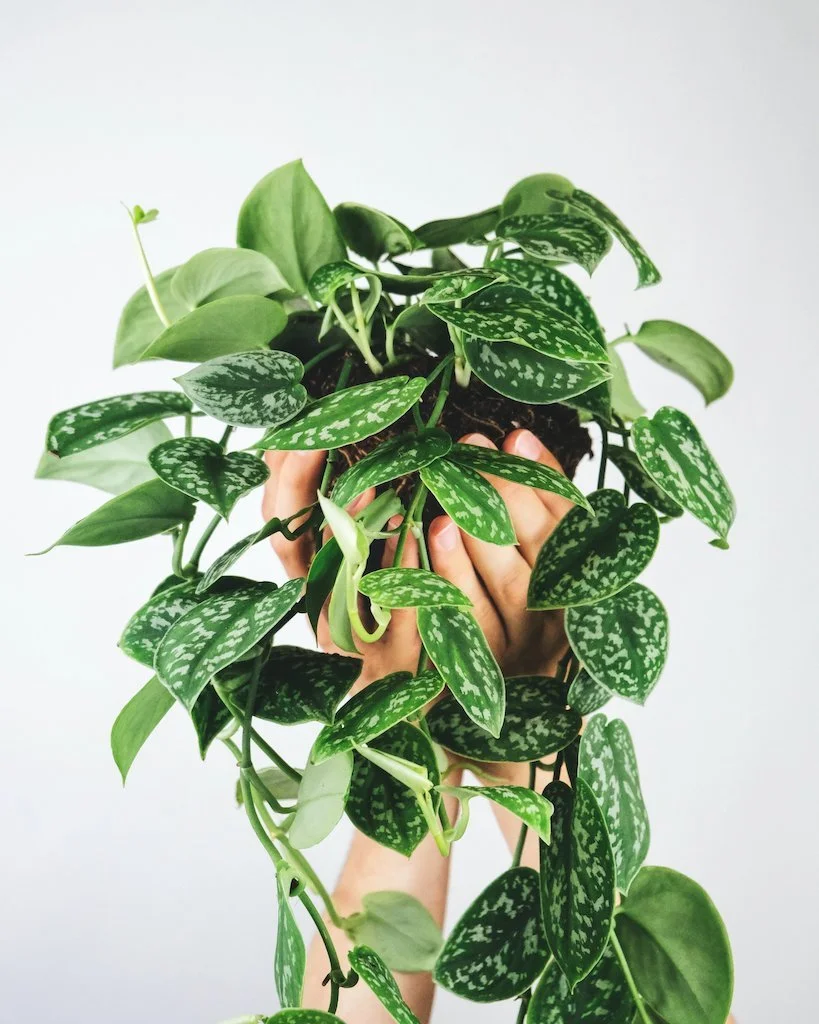Seven Trendy and Tropical Houseplants
Anthurium
Anthurium andraeanum
Known to be one of the easiest and longest lasting plants, Anthuriums are a colorful addition to any tropical space. Kiera Baron (How you should care for an indoor anthurium plant, HappySprout) explains that, “Red anthuriums are very common, but you can find white and pink plants and even plants that are shades of yellow, burgundy, and green.” If you live in a warmer climate, Anthuriums can also be planted outdoors. Otherwise, keep your plant potted inside. Keep in mind, these plants grow best in bright indirect sunlight and maintain a regular watering schedule.
Aloe Vera
Probably the best natural remedy for sunburn, the Aloe Vera plant doubles as an aesthetic house succulent. Almanac suggests, “Water aloe vera plants deeply, but infrequently. In other words, the soil should feel moist after watering but should be allowed to dry out to some extent before you water again. If the soil stays overly wet, the plant’s roots can rot.” We love placing Aloe in the kitchen, near a window.
Tip: Store your cut Aloe Vera leaves in the refrigerator before use for a cooling sunburn treatment.
Fiddle Leaf Fig
Ficus lyrata
Another increasingly popular houseplant, Fiddles can be a little pricey but will last a lifetime when properly cared for. Chelsea Faulkner (How to Care for a Fiddle Leaf Fig, HGTV) suggests, “once a week, when you water, turn the plant slightly so that the leaves receive equal sunlight and don’t start to grow toward a light source.” Find the best spot in your home to place your Fiddle and let it grow!
Alocasia (Elephant’s Ear)
Alocasia macrorrhizos
We’ve seen much growth in popularity with Alocasia plants the past few years… and we can see why. Despite it’s beautiful leaf appearance, this plant comes with a bit of baggage. Not only are these plants commonly known to be prone to spider mites, they are sensitive to direct sunlight. As forest floor plants, their natural habitat rests under the tree canopy. Avoid placing your Alocasia in direct sunlight as it will cause the leaves will burn. Greenery Unlimited suggests, “Alocasias need bright, but indirect light.” Alocasias are not suggested for homes with pets, as it is highly toxic.
Monstera
Monstera deliciosa
The bigger the better! When it comes to placement of your Monstera, we suggest selecting a spot with indirect sunlight and allows breathing room (we all need some space). Annie Quigley (Gardening 101: Monstera, Gardenista) informs us that, “if Monstera is given too much sun, the leaves will yellow. If it’s left in the dark, the plant will exhibit something called negative phototropism, where new leaves grow towards the dark, rather than the light.”
Styling tip: If you can’t handle the whole plant, we love styling a single leaf in a clear glass vase.
Chinese Fan Palm
Livistona chinensis
This statement plant in not only non-toxic and pet-friendly, it’s amazingly easy to care for. The Chinese Fan Palm requires an intuitive yet infrequent watering schedule and prefers bright indirect sunlight. Jon VanZile (How to Grow the Chinese Fan Palm (Fountain Palm), The Spruce) informs us that the Chinese Fan Palm “are popular landscape plants in warm, humid climates and are very suitable as indoor potted palms.”
Pothos
Epipremnum aureum
Known for it’s trailing features, Pothos thrive when placed or hung in high places allowing the vines to cascade. Shifrah Combiths (Pothos Are So Easy To Care For It’s Stupid, Apartment Theory) suggests, “Pothos do well in a wide variety of light conditions and are therefore an excellent option for even low-light homes. In fact, try to avoid direct sunlight.”
Styling tip: Get creative and use clear decorative hooks to spred out vines along the walls!
Need help with styling your home?
At Studio Shaolin we work with clients in Hawaii and across the United States to create timeless spaces that reflect the individual needs of each project. Learn more about how we can help with your design and home renovation project by booking a discovery call.







